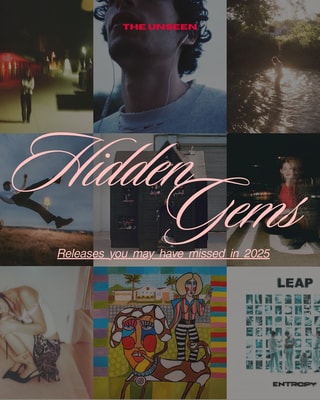Diljit Dosanjh's Album "Aura" Carries his Uncompromising Cultural Identity Fuelled by Global Beats
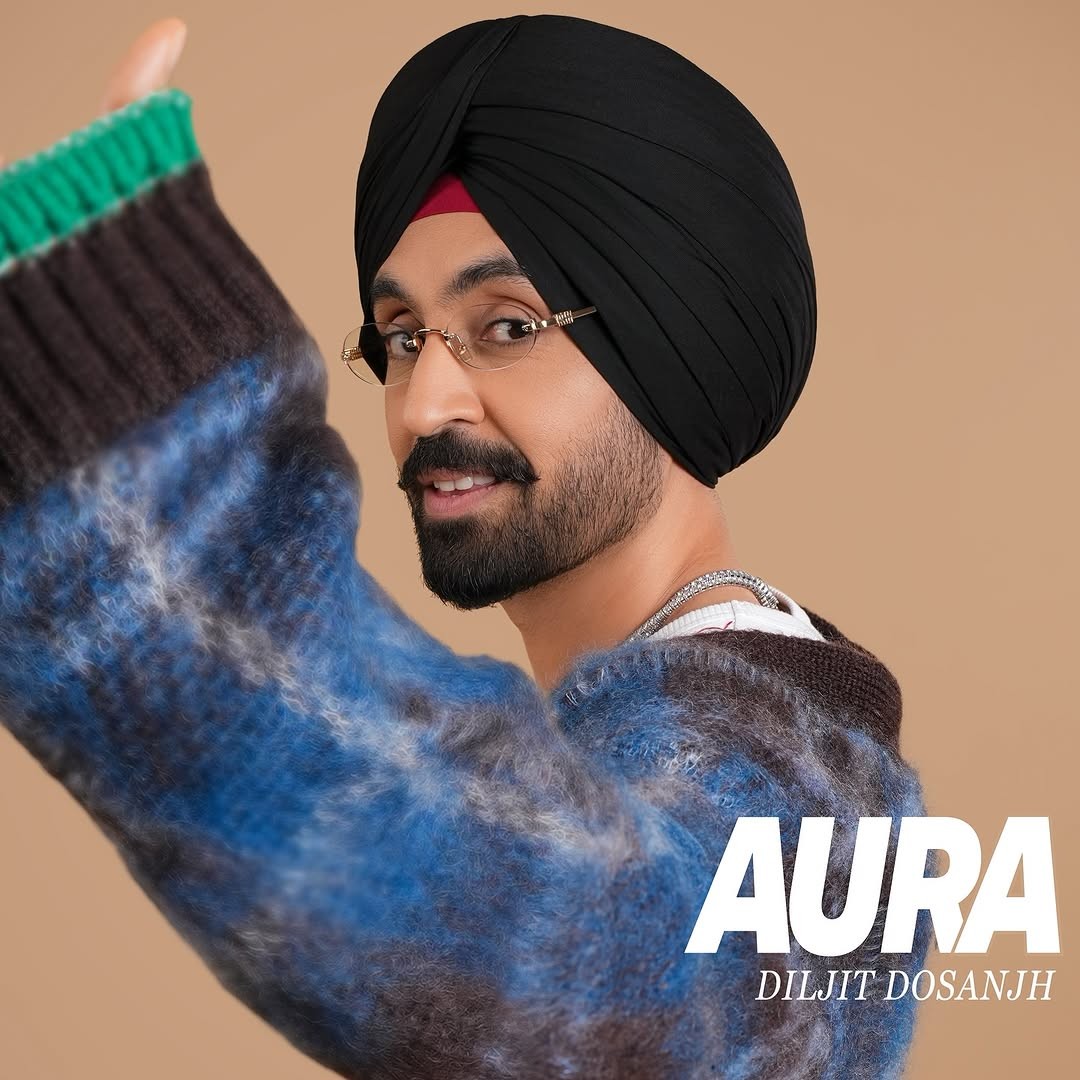
As the lights dim and the crowd roars, a turbaned figure in a traditional chadra-kurta steps onto the stage, his voice cutting through the noise with effortless magnetic swagger - “Panjabi aa gaye oye!” (“The Punjabis are here!”).
It’s more than just an entrance line; it’s a declaration of identity. This is how Diljit Dosanjh chooses to introduce himself to the world: not as a star, but as a proud ambassador of Punjab. "Main hoon Panjab" - A simple yet powerful phrase meaning ‘I am Punjab'.
From a young boy with a dream in a small village in Punjab, singing at local gatherings, to becoming the first Punjabi artist to grace the stage of Coachella Valley Music and Arts Festival in 2023 and appear on The Tonight Show Starring Jimmy Fallon in 2024 — Diljit’s journey is nothing short of extraordinary. Without the backing of a star lineage, he built his path step by step, powered by raw talent, courageous hard work, and relentless self-belief.
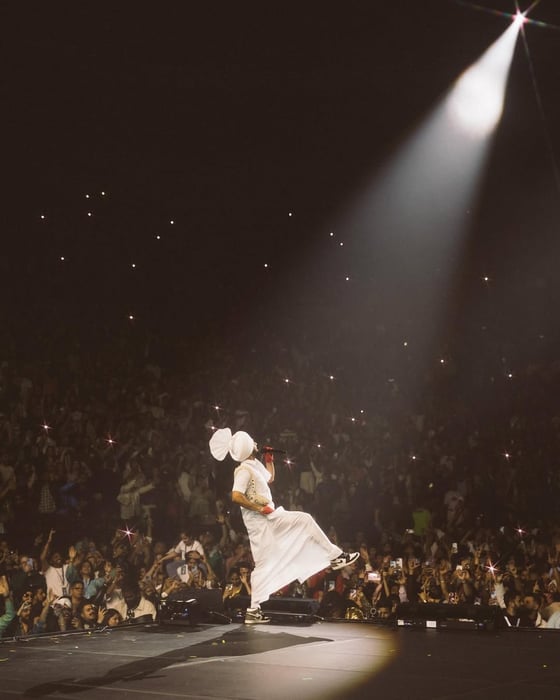
His global rise has been marked by groundbreaking collaborations with international artists, including Sia, Anne-Marie, Ed Sheeran, Jackson Wang, and Camilo. Yet, despite this global spotlight, Diljit has remained firmly rooted in the soil that shaped him.
With his signature light-hearted humor, he often pokes fun at his limited grasp on the English language in interviews and Instagram videos, a trait that makes him all the more endearing. But beneath the playful exterior lies an artist who has never compromised on authenticity.
He sings in Punjabi, carrying the intonation of folk traditions in his melodies, and allows the music to transcend language barriers. His beats are infectious, his slower songs are melodic and textured, and his lyrics carry the gentle weight of poetry.
In a world where many artists adapt themselves to global trends, Diljit has made the world come to him — on his terms, in his language, with his music.
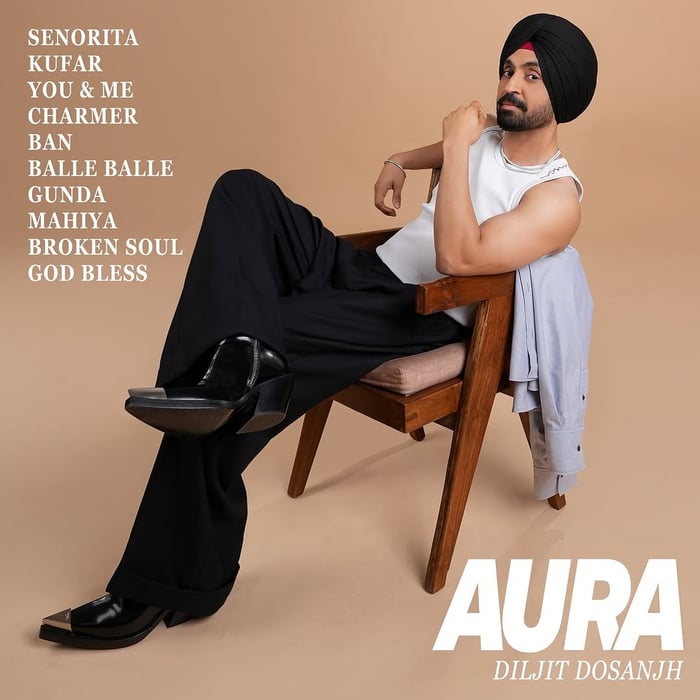
In his new album Aura, Diljit Dosanjh once again joins forces with Raj Ranjodh to weave his signature magic — blending global sounds with the heartbeat of Punjab. True to form, even as Western influences thread through his music, the soul of his lyrics and selective beats remains unmistakably Punjabi. In the upbeat track Senorita, Diljit seamlessly combines the modern and the traditional — pairing 'earrings' with 'jhanjar' (a delicate Punjabi anklet) to sketch the portrait of his muse. Similarly, Kufar, with Manushi Chhillar in the spotlight, quietly marks another milestone — Diljit’s smooth expansion into Bollywood, showing how the once ‘regional’ artist now moves effortlessly between worlds.
While the arrangements flirt with Western pop, the lyrical backbone stays rooted in Punjab’s culture and traditions. Take, for instance, the lines of one of the album’s romantic tracks Mahiya where he describes his muse:
Malmal (soft cotton) di chunni (scarf) gota (traditional decorative border)
Translation: A malmal scarf rimmed with gold.
Surma (traditional kohl) paa mota-mota
Translation: Kohl-lined eyes allure
Diljit’s artistry refuses to stay in one lane. He is as much an actor as a fashion icon who recently walked the Met Gala in regal Punjabi attire, and as much a singer as a storyteller. As multifaceted as the man himself, Diljit's album Aura brings forth the same versatility. The album moves easily between moods, from the infectious energy of Charmer, Kufar and Senorita to the tender romance of Mahiya. It then reaches its most vulnerable point with "Broken Soul," a deeply emotional and heartbreaking track that stands apart, giving the album more shape and completeness.
Raaviya ch dubbe gharhe add vichkaar c
Translation: In the Raavi River, the clay vessel sank midway
Asaa murh chuniya (chunni/scarf) nu rang naa charaya ve
Translation: We never dyed our scarves in bright colours again
The Raavi River, flowing through Punjab, is invoked here as a metaphor. The sinking of a fragile gharha (a clay pot) symbolises a love lost before its time. The chunni — the scarf that earlier signified beauty and festivity — now becomes a marker of grief, its bright colours abandoned.
As seen in the lyrics of Mahiya and Broken Soul, Diljit draws on deeply cultural imagery rooted in Punjab, invoking elements like chunni (scarf), gharha (clay pot), Raavi (river) and surma (traditional kohl). What makes these songs even more striking is how the melody itself aligns with this cultural language. Unlike the predominantly Western soundscape of the album, these tracks hold closer to traditional tonalities, inviting the listener to step into a more intimate, rooted space — one where the music speaks in Punjabi as much as the words do.
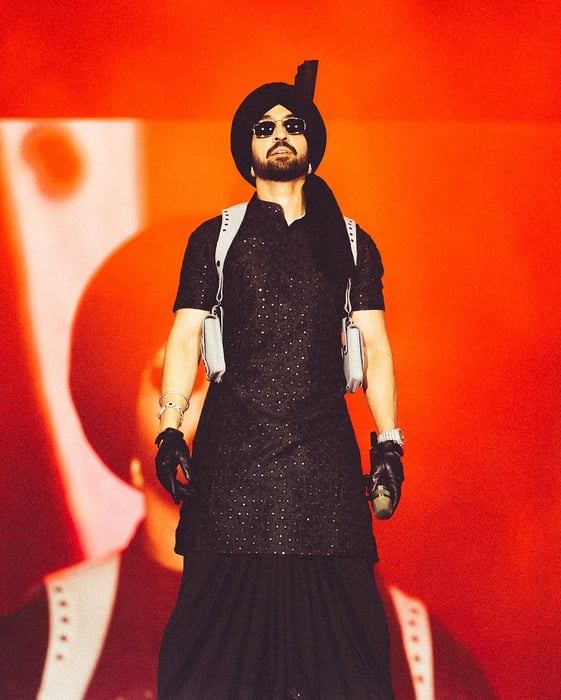
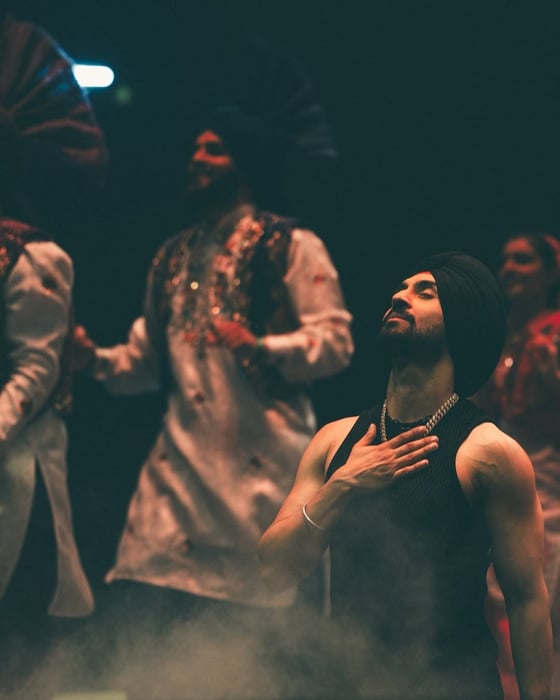
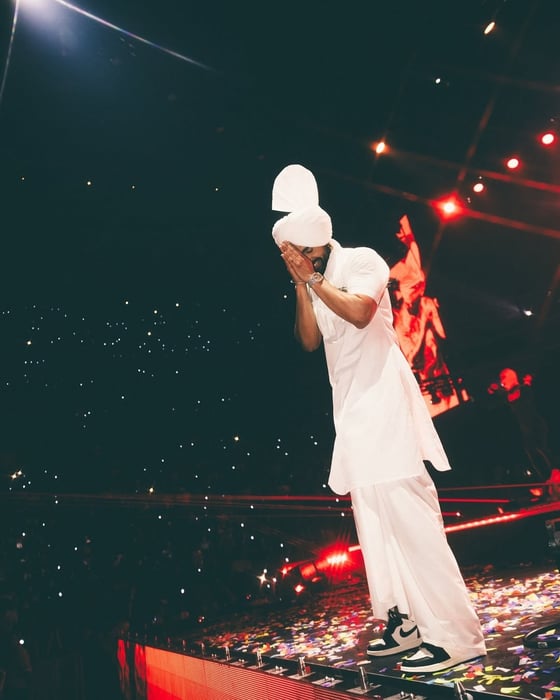
Tracks like Ban and Gunda are standout examples of how the album masterfully blends cultures through sound. They somewhat stand in contrast to the album's more mellow tracks, where the lyrics demand a more subtle and contained accent. However, due to the increasing quality of its lyrics, the tracks invite the pure, unadulterated intonation of Punjabi. The language's inherently uplifting and musical quality shines through in the full-throated emphasis on consonant clusters like bh, jh, gh and elongated vowels. Paired with amazing western beats, the blend is perfectly suited to the songs' confident and energetic lyrics, creating a catchy, empowering sound that is both authentically Punjabi and globally resonant.
The album's powerful conclusion, God Bless, serves as a profound tribute to shared cultural identity and resilience. It honors the legacy of Sidhu Moosewala, the iconic Punjabi artist who was tragically assassinated in 2022. The homage is quite clear: the track uses a similar composition to Moosewala’s song Old Skool, and during Sunny Malton’s rap, he echoes Moosewala’s signature catchphrase, “Dil da nii marha” (not bad of heart).
This tribute highlights a beautiful parallel between the two artists. Sidhu Moosewala chose his stage name from his village, "Moosa," and Diljit Dosanjh did the same at the start of his career, naming himself after his village, "Dosanjh Kalan." In closing the album this way, Dosanjh does more than just honor a Punjabi icon; he reinforces a core value they both embody: carrying one's heritage as the very heart of one's identity. It is a strong and poignant finale that celebrates Punjabi musical lineage and the enduring connection to one's roots.
Listen to the album here:
REVIEW BY
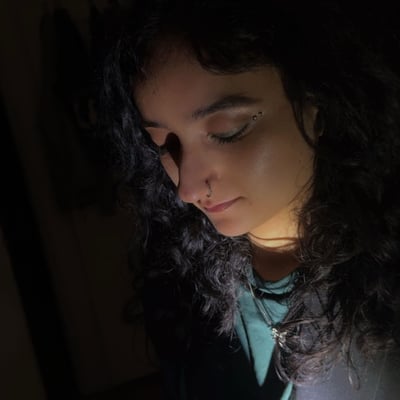
Ravgun
I am a writer who views the world through the lens of storytelling, a practice I explore formally as an English Literature student. I have an insatiable curiosity for new genres, artworks, and ideas. As a writer of poetry and short stories, I gravitate toward poetic lyricism, though I’ll happily indulge in a catchy beat with gloriously brainrot lyrics when the mood strikes. My creative and academic passions are deeply intertwined, revolving around queer theory, gender studies, existentialism, and gothic horror, romanticism, and tragedy (basically anything that echoes Edgar Allan Poe or Shakespeare).
